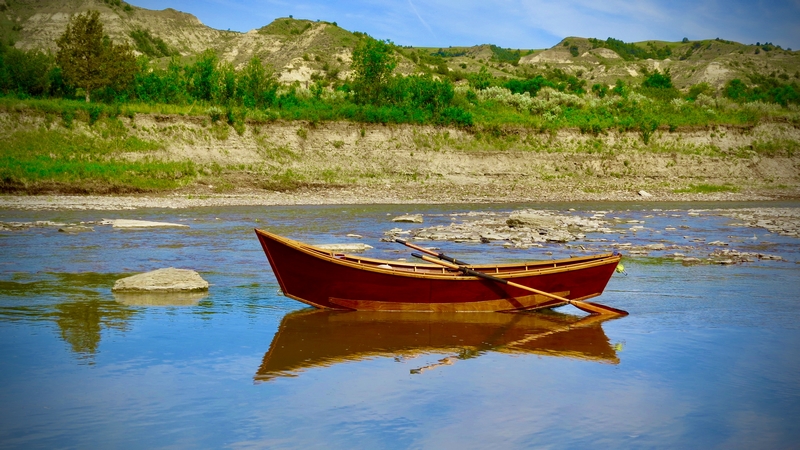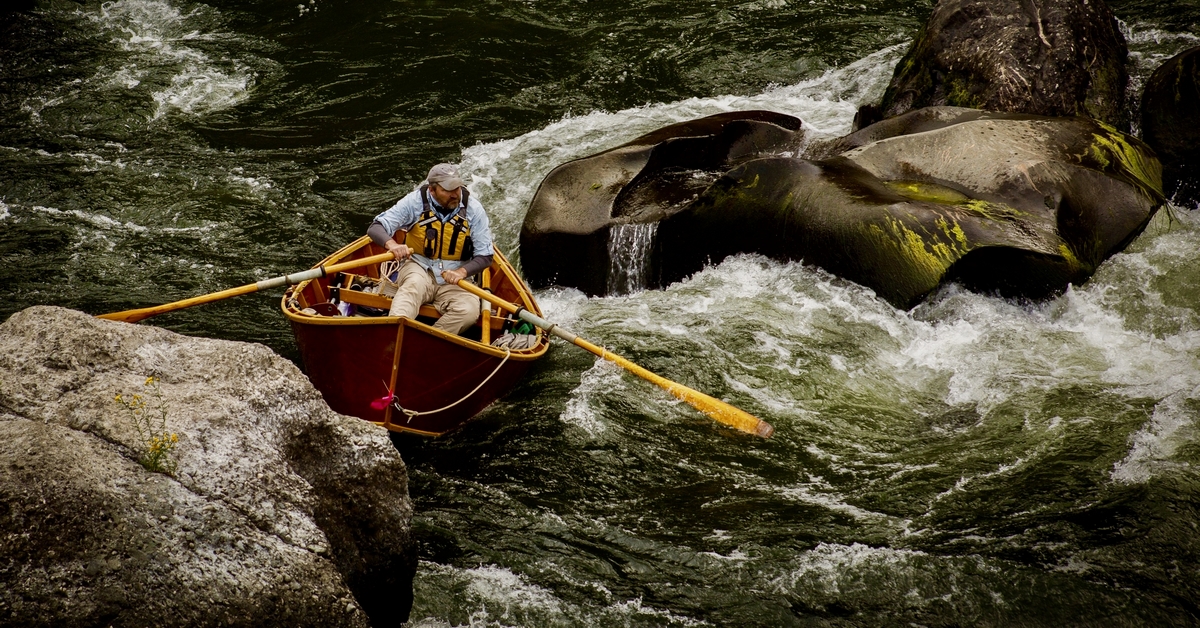
in a Wooden Boat
By Greg Hatten
I was anxious the first time I took my handcrafted McKenzie-style drift boat to The Wooden Boat Festival in Port Townsend, Washington. Realizing that boat builders and woodworkers with discerning eyes would be inspecting the construction details of my boat over the course of four days was almost reason enough for me to create a “change of plans” and not go.
Almost.
After completing the construction of my mahogany drift boat with WEST SYSTEM® Epoxy several years ago, I placed a call to the director of the Port Townsend Festival, Kaci Cronkite, to see if there was a spot to display a 16′ riverboat at the festival. The Wooden Boat Festival is one of the biggest festivals of this type in the United States. I hoped there would be a place for my river dory among the sea of saltwater wooden boats participating in the water and on the wharf. Kaci’s enthusiasm for wooden boat diversity was contagious. I signed up without thinking of the potential ego-bruising that might accompany my participation.
As the date neared, my anxiety grew. I obsessed over all the small things I couldn’t possibly correct or do-over before the event. I finally resigned myself to a “come as you are” strategy and hoped they would extend a little grace to a first-time boat builder.
Turns out, I was anxious for nothing… I was welcomed warmly by a great community of wooden boat enthusiasts who enjoyed seeing a boat that was unique and slightly out of context with the big beautiful saltwater boats surrounding it.
That was the beginning of a long-standing relationship with Port Townsend. I fell in love with the festival, the town, the people, the culture, the boat builders, the craft, the performers, the volunteers, the food, the singalong shanties… everything! It’s quite something really. Each year at the festival, I gave presentations on wild and scenic rivers, treacherous rapids, and the remote adventures to explore in a handcrafted wooden boat.
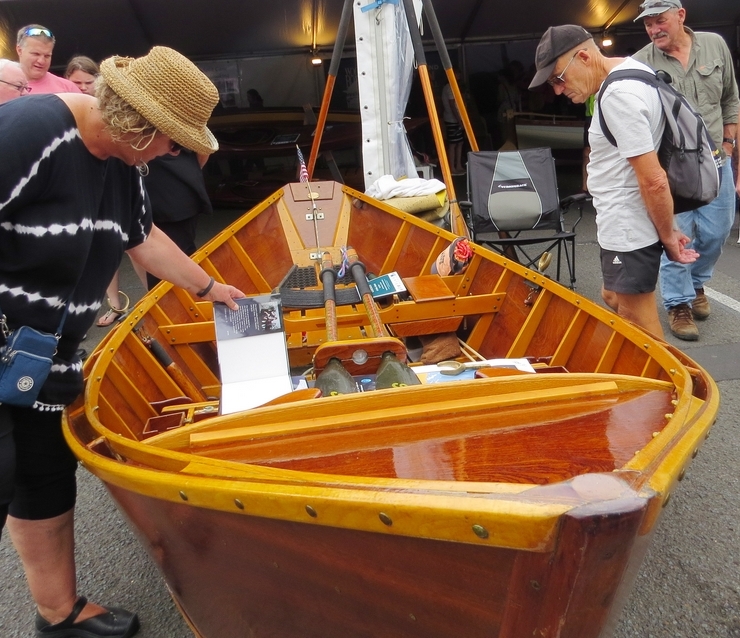
While those freshwater adventures in a riverboat are very different from sailing in the vastness of the salty sea, the common thread is wooden boats and the art of building them. Whether rowing through the chaos of the Grand Canyon on the Colorado River or sailing through Cook’s Strait between the North and South Islands of New Zealand—if you were the builder of the wooden boat you command—there is a special connection to the past, the environment, the art of navigation, the water, and the boat itself. It’s said that wooden boats have a soul shaped by the builder and forged by the water. I totally believe that. Freshwater or saltwater makes no difference. The builder and the boat are connected in a very intimate way.
In 2019, I was invited to give my Wild and Scenic presentation on the Adventure Stage at the Australian Wooden Boat Festival in Hobart. It’s one of the world’s largest wooden boat festivals, with a bunch of American wooden boat builders. I jumped at the opportunity. And when the festival director asked if they could ship my handcrafted boat in a container all the way to Hobart, Tasmania so the folks there could see the heart and soul of a McKenzie-style drift boat, I said yes before he finished the request.
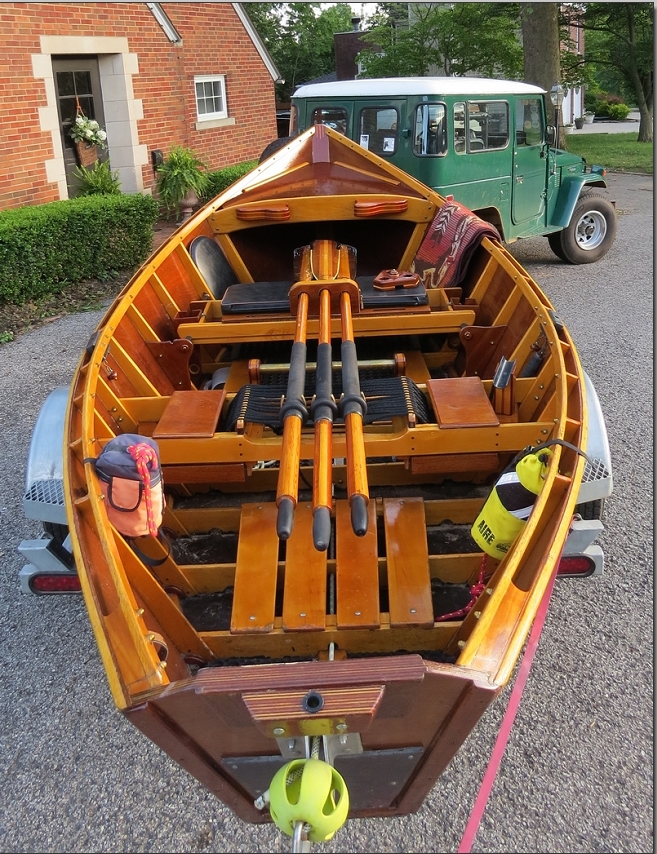
The estimated crowd for that festival was over 300,000 but I had less anxiety than I’d had fifteen years earlier in Port Townsend for a crowd of 30,000. There are many similarities between the festivals—mostly the warmth of the people we met. Every day of the festival, I stood beside my boat in the U.S. Pavilion, pointing out the features of the drift boat and describing how it moves like a sports car in whitewater. I let them sit in the rower’s seat, grip the oars, and helped them imagine leveraging the power of the river to turn the boat on a dime and avoid disaster.
I told them what it’s like to row a wooden boat on our wild and scenic rivers and how the rivers are as fragile as the wooden boats we row. Take your eye off the ball for one second and you could lose your boat to a river rock or boulder. Take your eye off the wild rivers and risk losing them to a dam, tram, casino or any number of things that threaten our greatest natural resources.
In turn, they told me about the Huon pine tree that grows wild only in the wet temperate rain forests of southwest Tasmania. It’s a slow-growth tree prized among boat builders because it is impervious to insects and highly waterproof. The 16th through 19th centuries were the “Age of Sail” when many wooden sailboats were built. During that time, Huon pine trees were harvested to near extinction. They are now protected from any harvesting. Ironically, about the only way to obtain Huon pine today is from the bottom of Lake Gordon where tons of ancient logs were buried when the Gordon Dam was built in 1974.
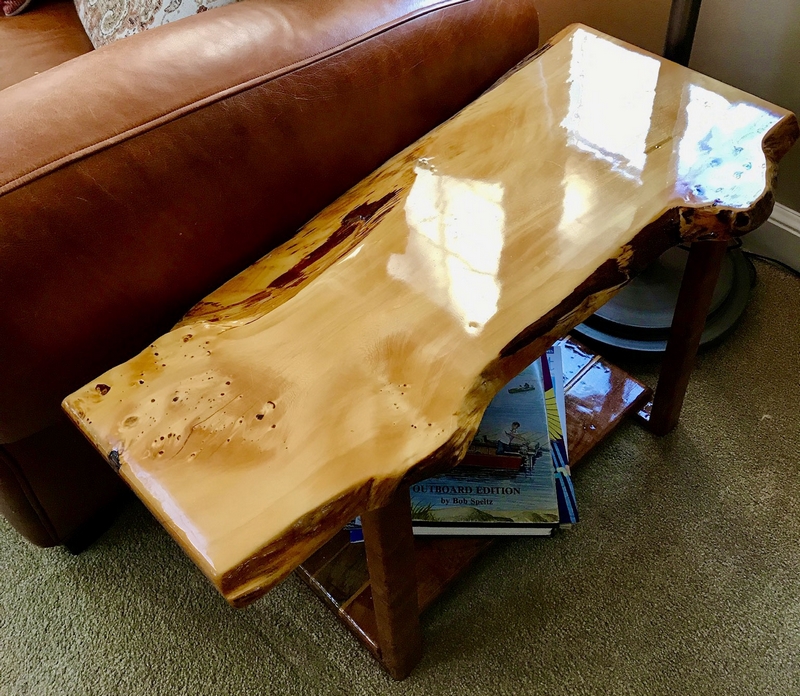
In remembrance of the Australian Wooden Boat Festival and Tasmania, I was given a small slab of Huon pine that had been recovered from the bottom of Lake Gordon. The little side table I built from it is a prized possession and a constant reminder of how fragile our natural resources are around the world.
I will continue to row with passion and write with purpose about our wooden boats on wild and scenic rivers. Perhaps one day I’ll return to the Australian Wooden Boat Festival. One thing is for sure: Every September you will find me and my riverboats in Port Townsend, most likely on the Adventure Stage showing videos and photographs of the amazing places a wooden boat can take you.
